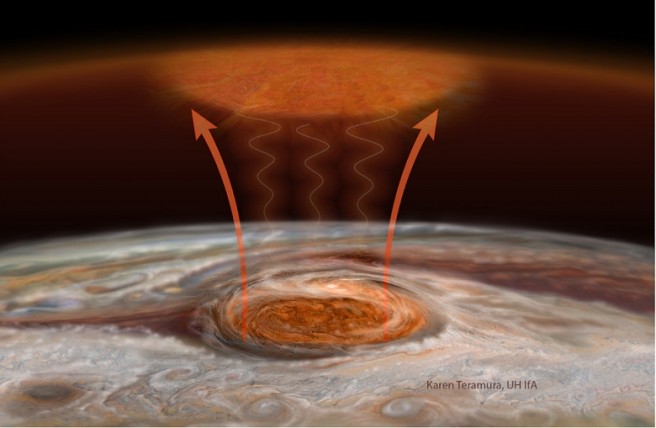The Great Red Spot is flaming hot, heats up Jupiter’s atmosphere
The Great Red Spot (GRS) on the Jovian world has always intrigued man since it was first observed in the year 1830.
It continues to do so as a new finding say that it fuming hot too. The red spot is the region on the planet that radiates the highest temperature.
The GRS on the planet is a massive storm which is as big as twice the diameter of our Earth. According to James O’Donoghue, lead author of the new study and a research scientist with Boston University’s Center for Space Physics, at about 800 kilometers above this storm (Jupiter’s atmosphere) temperature is touching 370 degree celsius (700 degree Fahrenheit) above the normal temperature.
Also read: Watch the stunning video of planet Jupiter’s polar lighting

Image courtesy: Art by Karen Teramura, UH IfA, James O’Donoghue
The normal temperature of the Jovian atmosphere is around 930 degree celsius, however, above, the GRS temperature touches 1330 degree celsius.
Till very recently, researchers weren’t able to explain the reason behind the unusually high temperature in Jupiter’s atmosphere apart from Solar heating.
Also read: After Pluto, NASA prepares for a scary rendezvous with Jupiter
If the GRS and the turbulent storm give that appearance is indeed the primary heating source of Jupiter, then the planet’s temperature should cool down as when the GRS would shrink in size.
Also read:
Earthlings, Welcome to Jupiter!
Guess the passengers on-board Juno veering to Jupiter’s orbit?

OMG-inducing, share-compelling, like-attracting, clutter-breaking, thought-provoking, myth-busting content from the country’s leading content curators. read on...
